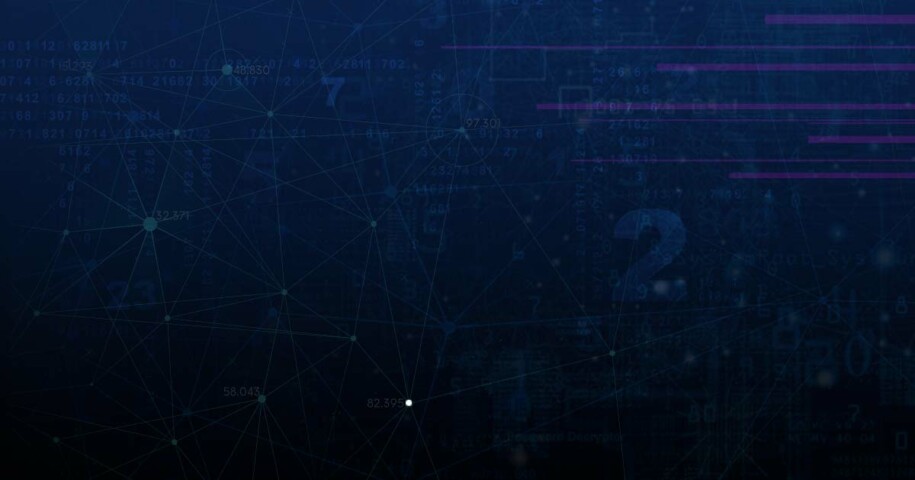Our most recent industry expert interview was with Steven Russman, the Founder and Executive Director of the International Business Software Managers Association (IBSMA) and Publisher of ECPweb. He is an author of more than 100 articles and reports on software asset management, tools assessments and industry trends, and a frequent presenter at industry conferences and seminars including IBSMA’s annual SAM Summit.
Mr. Russman represents IBSMA and North American software asset management professionals to national and international organizations including ISO, the IT Service Management Forum (itSMF) and the United States’ JTC1/SC7 Technical Advisory Group (TAG). He has led the development of software asset management standards and industry initiatives supporting education and advancement of IT and software asset management. Mr. Russman holds a PCSAM Certificate from IBSMA and a Masters Degree in Business Administration from Wayne State University in Michigan.
Flexera:
With companies spending so much on software, it has become a strategic asset. It’s recommended that companies have active administration of enterprise-wide software license acquisition, allocation, software deployment and operation, and the maintenance of software compliance terms and conditions in software license agreements. What do you see as the benefits of proactive software license management?
Steven Russman:
Productive software license management enables you to:
1. Negotiate software license, procurement and contract terms and conditions to your advantage
2. Control usage and cost by implementing software standards and guidelines
3. Save money by establishing usage-based software licenses
4. Identify excess capacity and redistribute unused licenses for maximum efficiency
5. Standardize support and license administration to save time and money
6. Minimize license compliance risk; reveal under licensing and overuse
7. Quickly create documentation to support a compliance audit or license review
Cost reduction is the top reason for investing in software asset management and IT asset management activities, according to surveys conducted by the International Business Software Managers Association (IBSMA) from 2005 to 2009. Improved software license compliance was the second-most frequently marked goal, followed by regulatory compliance and standardizing IT portfolios.
Of the companies that do have a formal system of software license management, more than 70 percent track and reconcile usage and licenses, and have defined policies and procedures. IBSMA surveys reveal, however, that software licensing is unmanaged in more than 80 percent of companies of all sizes in North America and Europe. Unfortunately, many IT managers and business-unit executives still question the need for professional and dedicated license management processes and tools—that is until they are audited for software license compliance and realize that spreadsheets and simple tracking tools are not enough.
Flexera:
How can a company save money with an effective software license management program?
Steven Russman:
It’s possible to save from five to 25 percent on acquisition costs, maintenance fees, insurance premiums and other software-related expenses with an effective license management program. To put it in terms of dollars and cents, IBSMA survey respondents report saving from tens of thousands to millions by managing software purchasing and redeployment.
Many companies buy more software licenses than they need or use—they are over licensed. Typically over licensing occurs when different departments in the same organization have free rein to purchase software without checking with a central buying resource. For example, the purchasing department acquires software, the legal department negotiates the licenses and maintenance contracts, the technology department installs and removes the software and end users operate it. When the stakeholders do not communicate or coordinate activities, redeploy surplus licenses, monitor and manage usage or bundle purchases for the best discounts, software costs can skyrocket.
Companies also spend millions on software that has been taken out of service but is still on the books and can be redeployed. Let’s say the company spent $4 million on 10,000 Microsoft Office desktop licenses and 6,000 are in use on active machines, 3,000 are on machines in storage and 1,000 were disposed of when older computers were retired. The purchasing records show 10,000 licenses and the buyer, unaware that only 6,000 licenses are in use, spends $400 for each package for software maintenance. The company overspends by $1.6 million when it renews software maintenance.
Flexera:
Do you see the number and types of software licenses increasing and, if so, what implications does this have on a software license management program?
Steven Russman:
Due in part to the relative growth of software expense as a component of IT expense, IT managers are searching for alternatives to traditional methods of licensing and paying for software. No doubt pressure to cut costs as a result of the recent economic downturn encourages a hunt for alternatives. According to a survey by the Experton Group, more than 40 percent of companies with more than 500 employees are already renting, leasing or using on-demand or software-as-a-service (SaaS) models for software provisioning.
The growth in new software licensing and software-provisioning alternatives can bring with it new license and contract-management complications. These new alternatives may come with a lower price tag, but the cost of software license management and contract risk need to be considered too. For instance, an on-demand application may require installation of a usage monitoring and reporting tool. A pay-as-you-go SaaS offering may shift software license management to the service provider, though system availability, disaster recovery and data protection are often overlooked in the agreement. The parameters and costs of these components ought to be addressed up front and spelled out the contract.
Flat-rate software pricing is often well established for on-premises installation of desktop software. In these cases, the company is usually responsible for running and managing the system and licenses. Flat-rate SaaS pricing—per user, per month or year—is an entirely different matter because the company shifts the on-premises work to the SaaS provider.
For the foreseeable future, companies of all sizes will face myriad license and software-delivery options, from SaaS to on-premises to virtualization. The abundance and combination of software provisioning models make understanding, reporting and managing this complexity an important precondition for cost- and risk-reducing strategies.
Flexera:
In terms of tools to support a software license management strategy, what best practices and advice would you recommend?
Steven Russman:
For enterprises supporting 1,000 or more end users each running 20-plus licensed applications on their workstations and servers, spreadsheets and simple databases are not sufficient for tracking and managing software license and inventory details. Some organizations use home-grown tools, and for the simplest computing environments with few applications, they may be enough. The disadvantage is that internally developed tools, like commercial applications, need to be updated and the responsibility for enhancements, new license information and staying current with product catalogs, releases and standards falls to the internal IT group. The cost of maintaining such tools can exceed the price of the best commercial products and the technology and design can lag.
Software license management requires two types of data. The first consists of technical data (i.e., usage details and file header or tag identifiers providing publisher name, title, product SKU, etc.) and application fingerprints (unique identifying characteristics that help identify the product) stored in a software inventory database. The second is business data (i.e., software license model, number licensed for use, contract and license key) in a license-information database. Technical and business data are reconciled to produce a picture of the current license position. There’s good news on collecting the data: today’s software license management tools are equipped with interfaces to exchange data with system management tools, enterprise resource planning (ERP) applications, asset accounting and human resources systems, greatly reducing the need for manual data entry.
When your infrastructure includes multiple discovery and usage-monitoring tools, ensuring a complete and accurate report on software license compliance requires much more than a basic tool. You’ll need a tool that can filter and analyze data from different systems to derive a comprehensive list of products installed and in use, along with the number of licenses required to support the base of users. Also complicating the process is the necessity of merging the bits and bytes on software usage (i.e., start, end, foreground or background, active process) with the business information (i.e., cost, contracts, users) and associating these details with the right software title.
Comparing the inventory of software licenses recorded on the business side to the amount of software installed and in use on the technical side requires an engine with specialized logic. This engine centrally manages a compliance-check function and uses a whitelist, or approved-product database, that contains a record of software products and their license specifications. The tool must have a library of software products to be managed by the tool. Changes in software attributes, such as components of product suites, are documented in this software library.
The engine’s reconciliation function considers the license specifications (metrics) and the inventory or usage and then calculates the license inventory. A compliance report is produced, revealing whether the company is over or under-licensed. The compliance report is a handy document to use as proof of time-based compliance (a compliance snapshot of a specific period) or in the event of a software audit. To avoid surprises, consider selecting a tool with built-in programmable notifications that alert the administrator of possible out-of-compliance situations.
Flexera:
There are a lot of components of a successful software license management program, what would you say is one of the key items to ‘get right’ and serve as a foundation of such a program?
IT Asset Management
It all starts with knowing what’s in your IT ecosystem. Flexera One discovers even the most elusive assets whether on-prem, SaaS, cloud, containers and more.
Steven Russman:
Maintaining an accurate software and hardware inventory is a critical element for any software asset management or IT asset management program. Whether the inventory is collected electronically or manually, or using both methods, you’ll need this information to reconcile your software installations with the entitlements outlined in your contracts. For software licensed by user or machine, it’s a relatively straightforward exercise to count installations or users and licenses and calculate the variance. For software licensed by concurrent use or consumption, you’ll need a tool to monitor usage and collect the data. The job of a license manager is to analyze usage patterns and then reconcile incidents of over and underuse and acquire additional licenses when needed.
Another goal of usage analysis is to identify unused and under-used software and reassign or retire it. IT managers report that redeployment and retirement processes save, on average, 10 to 30 percent of the software budget and also contribute to reductions in service-desk workload and software maintenance expense.
Let’s assume your company has 50 machine-based licenses of Major Project. Usage analysis reveals that 40 employees use this application on average 25 hours per week. The inventory tool identifies 100 Major Project installations on some 85 machines. Technically, the company is out of compliance by 50 licenses, the difference between licenses owned and installations. From a legal perspective, the company needs to correct the imbalance immediately or risk exposure, fines and unbudgeted software expense—a dodgy situation. However, from a usage perspective, it is over-licensed. How could that be and what should be done? Forty users need the tool and the company has 50 licenses. The solution is to de-install the software where it’s not used (on 45 machines), correcting the imbalance and leaving 10 Major Project units in surplus. The next step is to review the maintenance records and discontinue maintenance on the surplus or decommissioned units.







